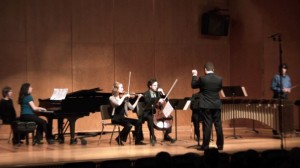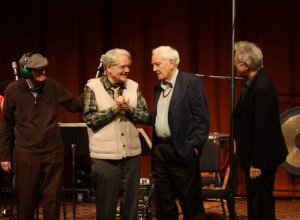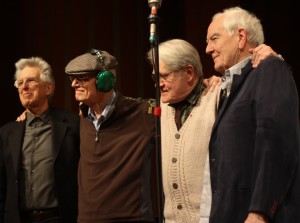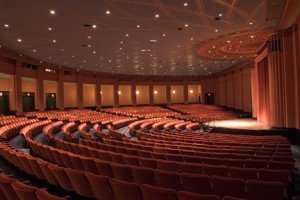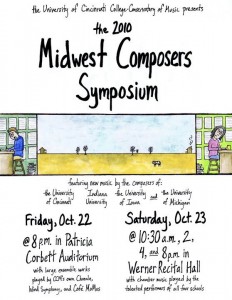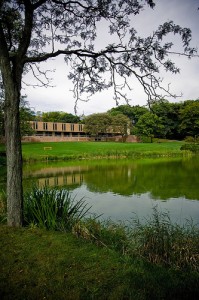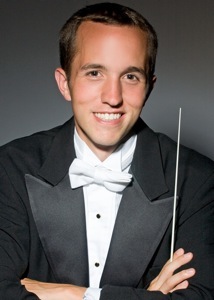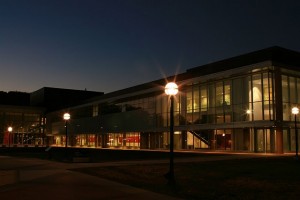 The University of Michigan’s final student composers’ concert of 2010 took place this last Monday, November 29, in Stamps Auditorium, part of the University’s Walgreen Drama Center. This collection of performances was unexpected; so many composers submitted material for November 15’s composers’ concert, a brief third concert of the term was necessary.
The University of Michigan’s final student composers’ concert of 2010 took place this last Monday, November 29, in Stamps Auditorium, part of the University’s Walgreen Drama Center. This collection of performances was unexpected; so many composers submitted material for November 15’s composers’ concert, a brief third concert of the term was necessary.
Whereas the concert earlier this month was unique with its multiple composer-performers, Monday’s event possessed a more subtle distinction: a strong stylistic dichotomy emerged among the works, essentially pitting modernist and traditional forces in opposition to each other. From a qualitative standpoint, I found this duality inconsequential because all of the evening’s acoustic works had something in common: they expressed their structures with the recurrence of clearly identifiable themes. Although the two electronic pieces on the concert used different formal techniques, they also contained clear and satisfying dramatic lines. As a result, I felt the evening’s music was tied together despite the starkly contrasting musical tastes presented on the program.
First on the concert was Bret Bohman’s she comes back as fire (2010), a three-movement work for string quartet. This piece is the complete version of something I heard, and reviewed, in October at Michigan’s and I was happy to reacquaint myself with the first movement’s unforgettable midsection – an aria where the first violin saunters in its highest register above a placid accompaniment. The rest of the piece explores and culminates material from the first movement, varying the music’s atmosphere little even though new content is introduced. Ultimately, Mr. Bohman references the memorable first violin solo in she comes back as fire’s final movement, but the surrounding music is too chaotic for its reappearance to establish a sense of repose. Mr, Bohman used his themes economically, which illuminated much of the work’s structure on the first listen. I am also sure further interaction with she comes back as fire would, more deeply, reveal a tightly wound and efficient network of musical material.
Next on the program was Patrick Behnke’s viola and violin duet, Miranda at the Edge of the Water (2010). Mr. Behnke currently studies viola at the University of Michigan and delivered a fine performance alongside violinist Jordan Broder. Loosely based on certain Indian rhythmic modes, Miranda at the Edge of the Water proceeded in a pseudo-improvisatory manner from an opening drone through a variety of dance-like passages and finally back to the static beginning, which evoked Mr. Behnke’s South Asian influences. I say “pseudo improvisatory” because the piece progressed like a stream-of-conscientiousness, and the violin and viola alternated the responsibility of leading the duo to its next musical destination, often via imitation. Mr. Behnke’s note explained connections not just to Indian music, but to Bela Bartok and Jimi Hendrix as well; yet, I heard another association – Arvo Pärt’s tintinnabulation. One of the few recurring sections featured a modal melody accompanied by its supporting triad. Particularly at the end of Miranda at the Edge of the Water, this technique gave the music a reverent and meditative quality, fitting Mr. Behnke’s description, “the violin ascends to the heavens. All is over.”
